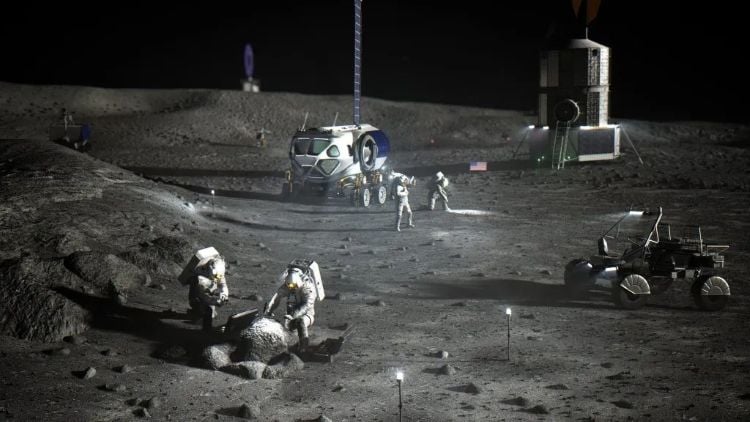How can thermoelectric generators (TEGs) help advance future lunar surface habitats? This is what a recent study published in Acta Astronautica hopes to address as a team of researchers from the Republic of Korea investigated a novel technique for improving power efficiency and reliability under the Moon’s harsh conditions. This study has the potential to help mission planners, engineers, and future astronauts develop technologies necessary for deep space human exploration to the Moon and beyond.
For the study, the researchers conducted a first-time analysis of how a novel TEG system could function under lunar surface conditions, specifically regarding the extreme temperature differences between the lunar day and lunar night, which ranges from 121°C (250°F) to -133°C (-208°F), respectively. Previous studies have hypothesized that drastic temperature ranges could enable greater efficiency for TEGs, also called a transient-state operation.
The goal of this study was to discuss how switching heat storage (HS) systems, also called multiple-HS systems, under lunar conditions could produce the transient-state operation. In the end, the researchers found the multiple-HS system under lunar conditions resulted in a 48.9 percent power generation increase, indicating the temperature range could benefit TEGs and a potentially long-term lunar habitat.
The study notes, “Deep space exploration, including missions such as the establishment of human bases, especially on the Moon and Mars, has garnered significant interest worldwide. As stated by scientists helming missions such as the Artemis project, a manned lunar base is an integral part of deep space exploration as it can serve as a base for future missions in the solar system. Consequently, production of sufficient power for maintaining such a base has become the focus of this research.”
The study discusses other potential power sources like Radioisotope Thermoelectric Generators (RTGs) but discourages their use for long-term missions due to the half-life decay of radioactive isotopes. Despite this, RTGs have successfully been used on instruments that were left on the lunar surface by the Apollo missions and are currently being used by NASA’s Curiosity and Perseverance rovers on Mars.
Going forward, NASA plans to use RTGs on the agency’s upcoming Dragonfly mission, which is currently slated to launch in July 2028. The researchers briefly mention how solar and nuclear power could be used as viable power sources on the Moon, with nuclear fission reactors previously being suggested for use on the lunar surface.
NASA’s Artemis program, specifically with the goal of establishing a long-term human presence on the lunar surface, enhances the relevance of this study. The continued development of new technologies on the lunar surface not only ensures a long-term human presence on the Moon but also establishes technologies that could be used on future crewed missions to Mars, as outlined in NASA’s Moon to Mars Architecture. Additionally, the use of a reliable power source on the lunar surface mitigates the need for bringing power sources from Earth, enhancing a practice called in situ resource utilization (ISRU), which uses available resources to maintain a successful mission. In this case, TEGs use the wide temperature range on the lunar surface for their power generation needs.
As humanity continues its journey towards developing long-term settlements beyond Earth, studies like this demonstrate a growing interest in using Earth-based technologies for improving life beyond Earth. Perhaps TEGs could serve as a starting point for powering long-term lunar habitats until a more advanced and reliable system is established.
How will thermoelectric power generation help advance lunar habitats in the coming years and decades? Only time will tell, and this is why we science!
As always, keep doing science & keep looking up!
